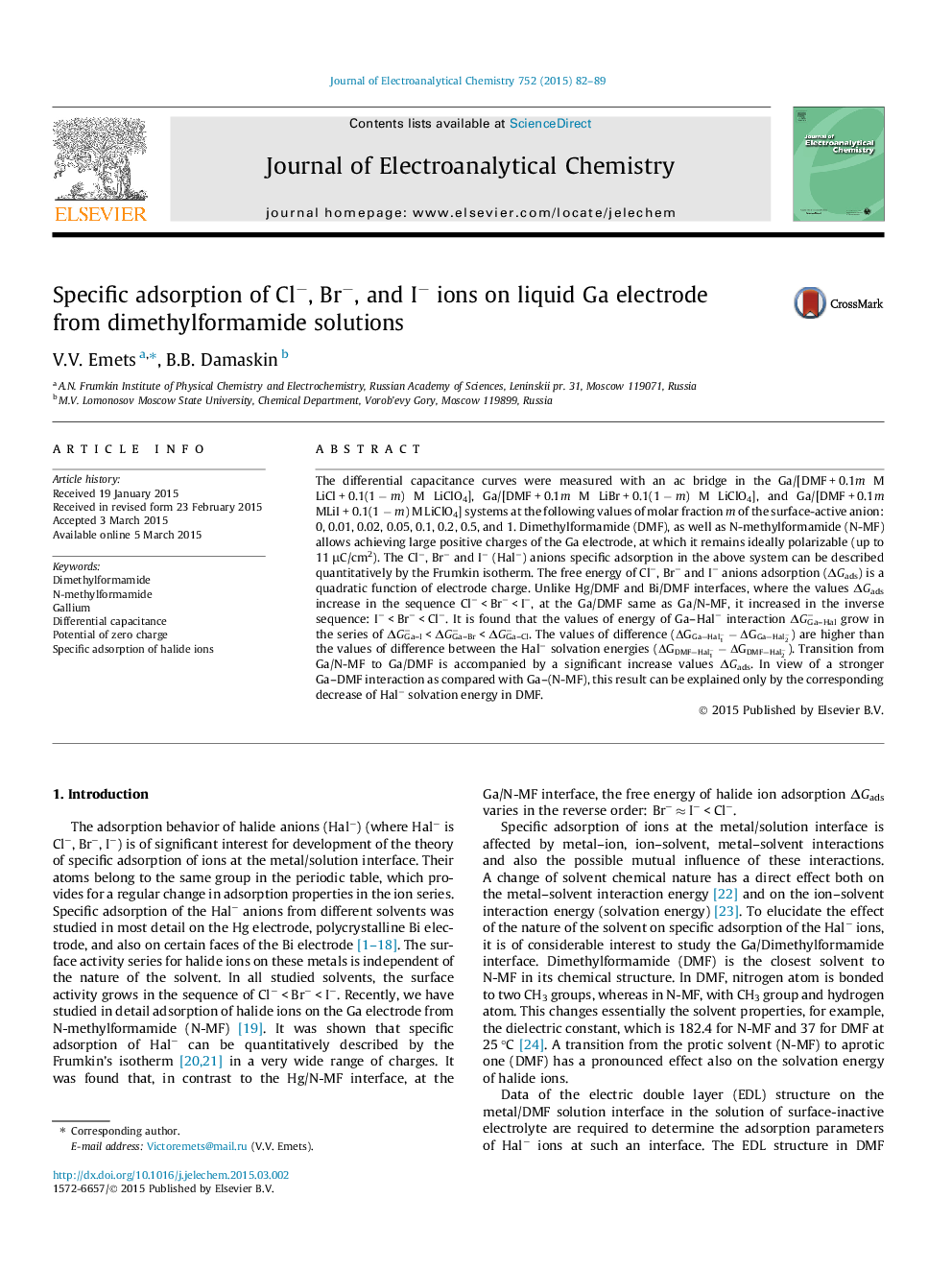| Article ID | Journal | Published Year | Pages | File Type |
|---|---|---|---|---|
| 218147 | Journal of Electroanalytical Chemistry | 2015 | 8 Pages |
•Adsorption parameters of I−, Br−, Cl− at metal/DMF interface depend on metal nature.•The adsorption of Hal− on Ga/DMF can be described by the Frumkin isotherm.•The adsorption energy ΔGads on Ga unlike Hg grows in the series of Cl− < Br− < I−.•The difference of metal–Hal− energy ΔGM–Hal1--ΔGM–Hal2- grows from Hg to Ga.•The ΔGads increase significantly at transition from Ga/(N-MF) to Ga/DMF.
The differential capacitance curves were measured with an ac bridge in the Ga/[DMF + 0.1m M LiCl + 0.1(1 − m) M LiClO4], Ga/[DMF + 0.1m M LiBr + 0.1(1 − m) M LiClO4], and Ga/[DMF + 0.1m MLiI + 0.1(1 − m) M LiClO4] systems at the following values of molar fraction m of the surface-active anion: 0, 0.01, 0.02, 0.05, 0.1, 0.2, 0.5, and 1. Dimethylformamide (DMF), as well as N-methylformamide (N-MF) allows achieving large positive charges of the Ga electrode, at which it remains ideally polarizable (up to 11 μC/cm2). The Cl−, Br− and I− (Hal−) anions specific adsorption in the above system can be described quantitatively by the Frumkin isotherm. The free energy of Cl−, Br− and I− anions adsorption (ΔGads) is a quadratic function of electrode charge. Unlike Hg/DMF and Bi/DMF interfaces, where the values ΔGads increase in the sequence Cl− < Br− < I−, at the Ga/DMF same as Ga/N-MF, it increased in the inverse sequence: I− < Br− < Cl−. It is found that the values of energy of Ga–Hal− interaction ΔGGa–Hal− grow in the series of ΔGGa–I− < ΔGGa–Br− < ΔGGa–Cl−. The values of difference (ΔGGa–Hal1--ΔGGa–Hal2-) are higher than the values of difference between the Hal− solvation energies (ΔGDMF–Hal1--ΔGDMF–Hal2-). Transition from Ga/N-MF to Ga/DMF is accompanied by a significant increase values ΔGads. In view of a stronger Ga–DMF interaction as compared with Ga–(N-MF), this result can be explained only by the corresponding decrease of Hal− solvation energy in DMF.
Graphical abstractFigure optionsDownload full-size imageDownload as PowerPoint slide
